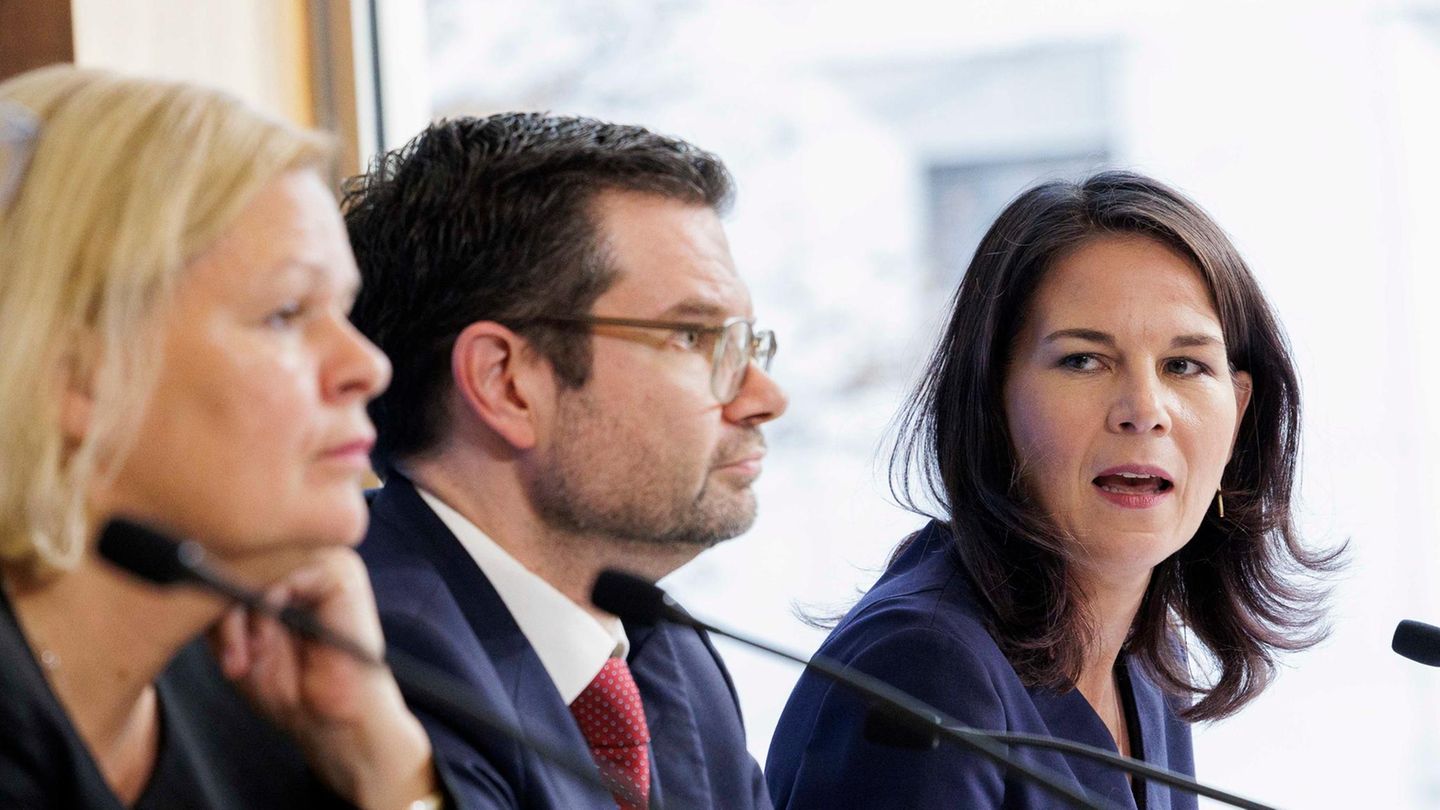The traffic light coalition and the Union are at odds over border controls and legal details. What happens now after the talks have failed? Here are the most important answers.
Irregular migration should be more strictly restricted. Almost all parties represented in the Bundestag agree on this point. Only the Left Party MPs would probably not agree. The traffic light government is now relying on even more border controls and has presented a proposal for accelerated return of asylum seekers to other EU countries. The Union does not consider this to be sufficient.
The most important questions and answers about the planned and proposed changes in migration policy:
What did the federal government recently announce?
Following the fatal knife attack at a city festival in Solingen, changes were decided to help the Federal Office for Migration and Refugees (Bamf) clarify the identity of asylum seekers.
In addition, the aim is to ensure that a foreigner who has been granted protection in Germany will generally have this protection revoked if he or she travels to his or her country of origin in the meantime. However, there are exceptions to this, for example if someone can prove that he or she traveled to the funeral of a close relative and therefore knowingly took a risk. The German authorities also have to be aware of the trip. This is not necessarily the case if someone travels to Syria via a third country, for example.
The so-called security package is to be discussed for the first time in the Bundestag on Thursday.
What is happening now at the German borders?
In the traffic light coalition, there were previously hardly any supporters of permanent border controls, because these are not actually provided for in the so-called Schengen area. Nevertheless, Federal Minister of the Interior Nancy Faeser (SPD) has not only extended the controls on the land border with Austria that began in 2015 several times. In mid-October 2023, she also ordered such temporary controls for the borders with Poland, the Czech Republic and Switzerland and notified them to the EU Commission.
This week, it decided that from Monday there should be permanent controls at the remaining border sections. This applies to the borders with France, Denmark, Belgium, the Netherlands and Luxembourg. Such controls can also lead to waiting times for commuters, tourists and freight traffic. So far, however, there have been no major traffic jams where such controls are already in place.
Why is Faeser expanding controls?
The number of asylum seekers has fallen. In the first eight months of this year, around 160,000 people in Germany applied for asylum for the first time: 22 percent fewer than in the same period last year. Nevertheless, many municipalities feel overwhelmed when it comes to housing, integration, and school and daycare places for new immigrants – also because war refugees from Ukraine, who do not have to apply for asylum, also have to be cared for.
In addition, the debate about irregular migration has intensified following several violent acts committed by immigrants. The fatal knife attack at a city festival in Solingen in August sparked particularly great outrage.
What changes will the border controls bring?
Although measures against people smugglers in other countries such as Serbia or Poland also play a role, some observers also attribute the decline in the number of asylum seekers to the additional border controls introduced in October. This is because people smugglers who bring people across the border without a visa are at greater risk of being discovered and prosecuted.
Checks carried out directly at the border also allow for rejections. However, foreigners are currently only rejected in two cases: if an entry ban has been imposed or if someone does not submit an asylum application.
What does the Union want in terms of rejections?
The CDU/CSU parliamentary group is of the opinion that people who want to apply for asylum could also be turned back directly at the border. Among other things, it refers to Article 72 of the Treaty on the Functioning of the European Union. This guarantees the EU member states responsibility “for maintaining public order and protecting internal security”. Traffic light politicians find this legally questionable and fear that such a step could jeopardize the implementation of the painstakingly negotiated compromise for a reform of the Common European Asylum System (CEAS).
Migration 2024
Most people apply for asylum in Germany from these countries
However, it is always possible that someone who has been rejected will then try to come to Germany again, possibly going undetected, and then applying for asylum. Federal Justice Minister Marco Buschmann (FDP) refers to this when he says that this form of rejection is less effective than the Dublin return procedure.
What did the traffic lights offer instead?
Federal states that are located on a border should provide deportation detention places close to the border and organize permanent availability of administrative judges so that people for whose asylum procedures another EU state is responsible under the so-called Dublin rules can be returned there more quickly than before.
For its part, the federal government wants to send BAMF employees to ensure that the so-called Dublin procedures are processed quickly. The Federal Minister of the Interior is also offering to have federal police officers take over the entire repatriation process.
What would the traffic light proposals achieve?
In some cases, it would probably lead to deadlines not being missed, meaning that slightly more people would actually have to return to the state responsible for their asylum procedure, which is in most cases the first EU country where an asylum seeker was registered.
However, this would not change the lack of willingness to cooperate on the part of countries such as Italy. Italy is currently blocking Dublin returns, citing its challenges as a country with external EU borders. There are also rulings by German courts that consider even the deportation of recognized refugees to Greece to be unreasonable due to the poor prospects of work or state benefits.
And what about Germany’s neighboring countries?
Poland and Austria have already criticized the Union’s rejection plans. However, the Union is banking on a “domino effect,” says the group’s domestic policy spokesman, Alexander Throm. In other words, that fewer asylum seekers will come in the medium term if more EU states reject them. It is about “the other EU countries protecting their borders and not simply allowing refugees to travel on to Germany,” says the CDU politician.
© Photo: Jana Mai / Stern
Will the issue of migration catch up with us again, Mr Wüst?
01:57 min
How does all this relate to the EU asylum reform?
The reform, which was adopted in the spring, regulates the distribution of those seeking protection among the EU states with a “solidarity mechanism”. It also provides for rapid asylum procedures at the external borders for people from countries that are considered relatively safe. However, it will take some time before the reform takes effect. The member states must implement it into national law by May 2026 at the latest.
Source: Stern
I have been working in the news industry for over 6 years, first as a reporter and now as an editor. I have covered politics extensively, and my work has appeared in major newspapers and online news outlets around the world. In addition to my writing, I also contribute regularly to 24 Hours World.




